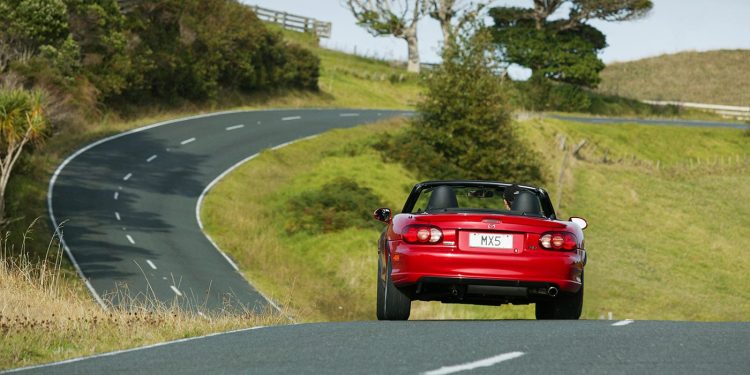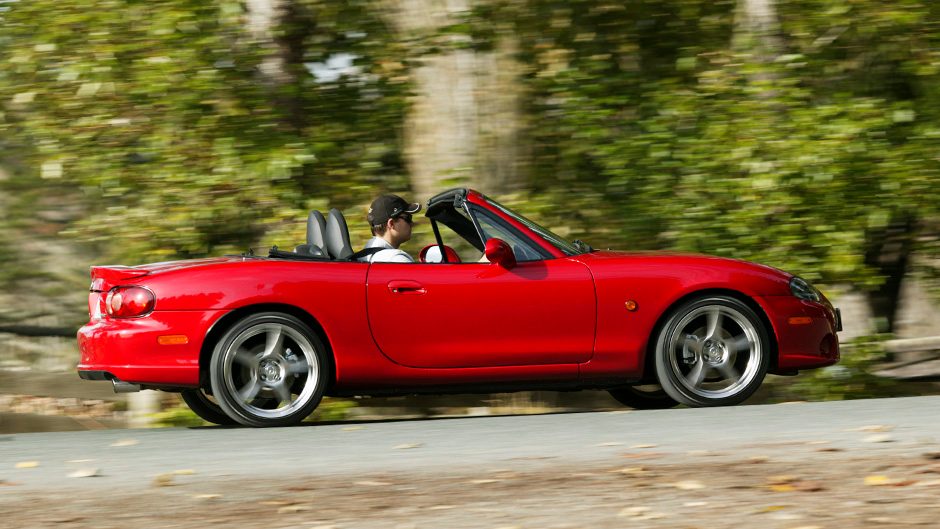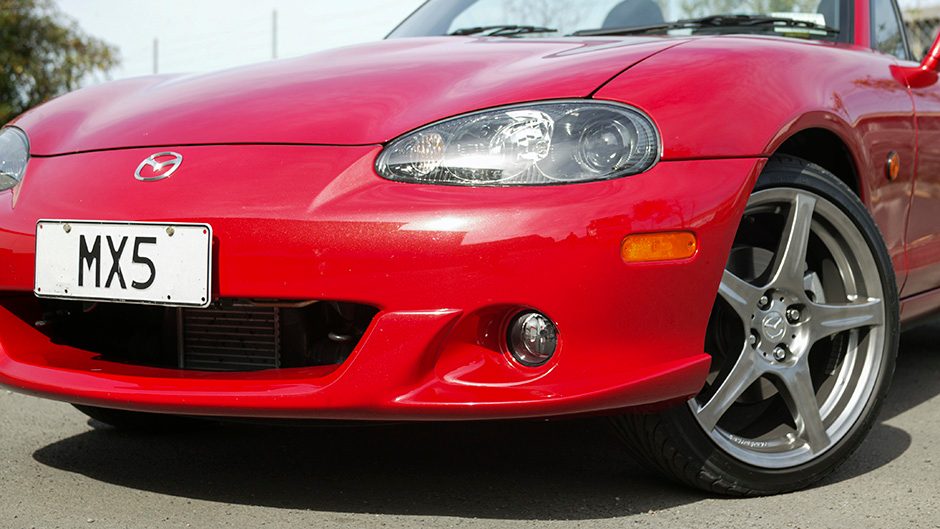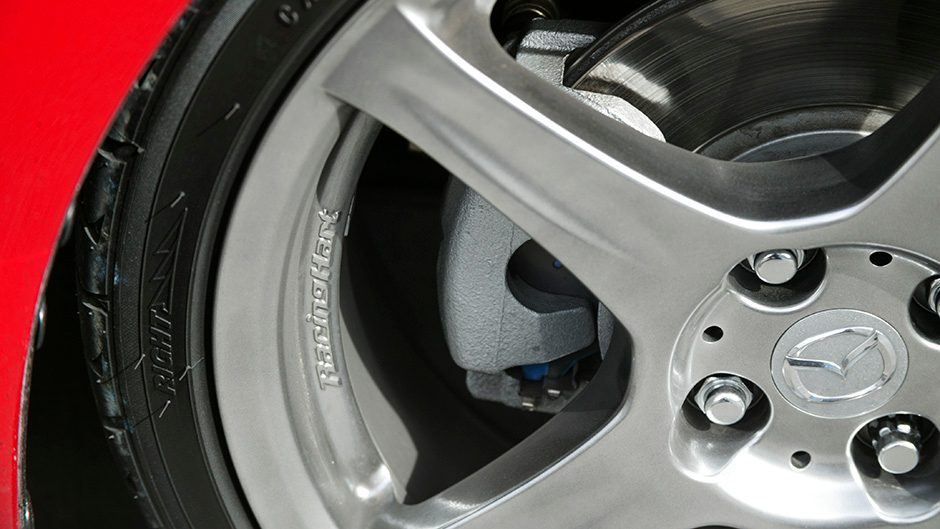2004 Mazda MX-5 Turbo review
Words Paul Owen | Photos Tom Gasnier
How can Mazda build a better version of the iconic MX-5? The new addition of a factory-fitted turbocharger is definitely a great place to start.
Ever since the MX-5 burst onto the scene in 1989, the comment has been, “Great drive, but it could do with more power.” Over the years, some people have gone to great lengths to endow the 5 with more motivation, fitting turbos and superchargers to Mazda’s little four-pot, while others have tossed out the small engine, shoehorning in small V8s, big fours and even Wankel rotaries to get the roadster down the straights faster and spinning those rear wheels harder. Finally, after 15 years, Mazda has delivered the new MX-5 Turbo to appease those who feel that enough horsepower is never enough.
The engineers at Hiroshima have long been defensive about their little car and its power output. The thought of injecting the MX-5 with muscle-inducing steroids was heresy. The original recipe was light not only on power but also weight to give lively, but not breathtaking performance. With effective underpinnings and communicative and direct controls, it delivered a drive that was unparalleled for its price at the time. You’re still hard pressed to find a car that delivers the same satisfaction as the MX-5, almost 15 years after the original breathed new life back into the roadster scene.
The recipe hasn’t changed much over the years. Still a lightweight, open-top sportster, it now has a stiffened body, the engine’s been enlarged slightly, and more safety equipment has been added, but overall the character has remained intact. Until now that is. With the introduction of a blower comes more driver appeal: more power, more torque and more sideways action. It can burst from corner to corner with greater speed, revelling in its bolstered midrange. Ironic, don’t you think, that a hairdryer has been bolted onto a machine that is perceived as being the ultimate hairdresser’s car? It’s a misplaced tag on a drive as great as the MX-5 – more suited to the old BMW Z3 and convertible Peugeots.
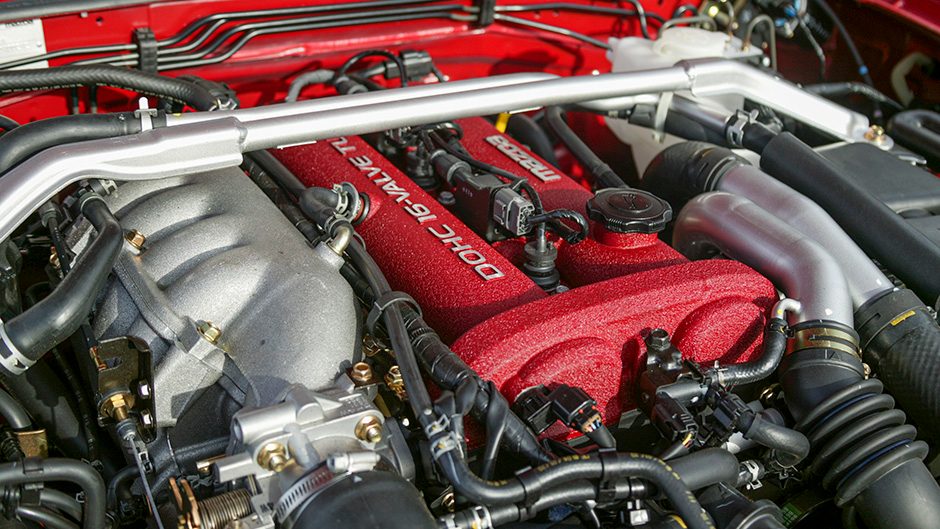
So what’s the under the hood? Lift the lightweight bonnet and you’re greeted by Mazda’s familiar 1800cc, four-cylinder engine sporting a new red cam-cover with ‘turbo’ etched onto it. Mazda’s BP series of engines are no strangers to forced induction; they’ve been feeding on rammed air in 323s and Familias for almost twenty years now.
What the addition of the turbocharger and intercooler has obviously done is to boost the power and torque through the midrange and raise the peak outputs. Compare the MX-5 Turbo, with 121kW at 6000rpm, and 206Nm of torque at 4500rpm, to the normally aspirated figures of 113kW at 7000rpm and 181Nm at 5000rpm, and you can see where forced induction has made the difference. It’s still less than that enjoyed by 323 drivers in the early nineties, but it does the job here. Although the engine isn’t all that refined, it has built up a solid reliability record over the years. And while NVH isn’t its strong point, in this type of car the engine can get away with it. Using the old notion typically reserved for Italian vehicles, the rowdy engine adds to the MX-5’s character.
The single-scroll turbo blows softly into the inlet manifold, with maximum boost set at a low 7.25psi. The charged air is cooled by a small air-to-air intercooler positioned up front in the air inlet of the new bumper. It’s a conversion designed to provide more accessible torque rather than to shred the rear tyres with oodles of top-end power. And it has achieved this; the MX-5 is now ready to play early with more torque at lower revs, giving it extra balls out of the corners. In-gear acceleration is improved also, the extra torque and the short gearing allowing the roadster to pull better from low engine speeds. The turbo lag isn’t bad and you can feel the power arrive in the upper rev range, with a rush of extra surge coming as the engine reaches 4000rpm. Chasing revs has always been the game in the MX-5 and it hasn’t changed in the Turbo. The power doesn’t fall away until the limiter calls it quits at 6700rpm, 500rpm earlier than the normally aspirated version. Some may grumble about the short gearing, but on the flip side, it adds to the attraction, as there’s a lot of gear-swapping on any spirited drive. Lucky the action of the six-speed gearbox is swift and precise, its short and accurate throws making it easy to keep the engine on song. The motor may be buzzing at motorway speeds (100km/h in top equates to 3000rpm) – but hey!, you won’t notice it over the wind noise if you have the top down.
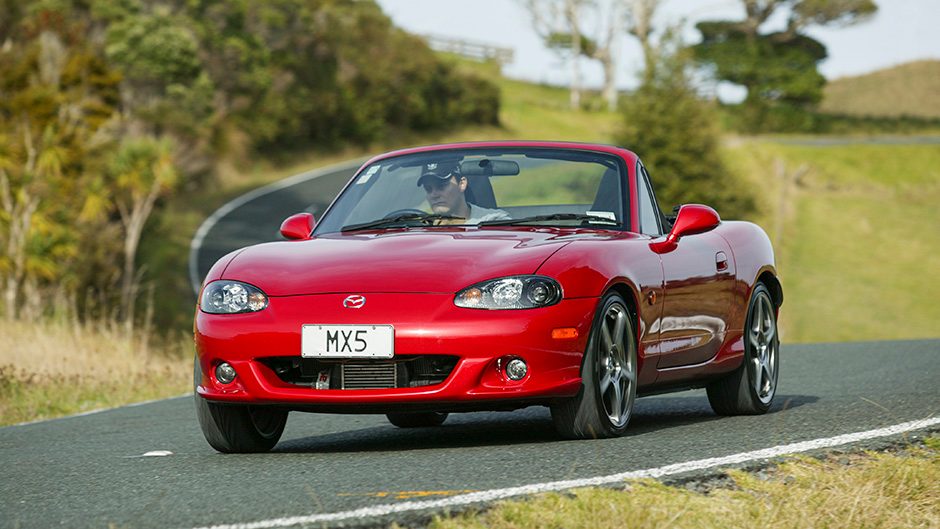
Flat-out runs reveal what the Turbo upgrade has achieved in terms of straight-line performance. We’ve recorded the normally aspirated MX-5 six-speeder as taking 8.7 seconds for the 0-100km/h run and 5.9 seconds for the overtaking move; with a few extra kilowatts, the Turbo knocks those times down to 7.48 seconds and 5.15 seconds. The overtaking time would have been quicker but the short gearing requires a shift into fourth to crack 120km/h.
This is no boy-racer special, i.e., more power and no consideration for the rest of the package; Mazda has added a few extras to make it complete. There’s the new nose and boot spoiler, and some of the best-looking alloys ever to grace a car fresh from the factory. More importantly, those alloys are hugged tightly by a set of soft and sticky Toyo tyres that give the MX-5 a bigger claim on the land. Without getting into any foreshore debates here, let’s just say that the rubber makes the extra power stick, and the Turbo is harder to provoke into lewd, power-on oversteer around town. Underneath, there’s the familiar double-wishbone set-up that gives the MX-5 its awesome handling characteristics, supplemented by new Bilstein dampers with stiffer spring rates and beefed-up roll bars to put a harder edge on the chassis. The front suspension towers are shored up with the usual strut brace to stiffen the front end. Ride height has been lowered a smidge, and with the body kit and alloys, it makes this the horniest-looking MX-5 ever. Not to be overlooked is the paint. The speckled scarlet-red finish is the business and changes tone with the light conditions.
On the driveline front, the necessary reinforcement has been made to the clutch and gearbox internals, as well as strengthened drive- and prop-shafts. At the rear, there is a new torque-sensing limited-slip diff to keep unnecessary tyre smoke to the minimum.
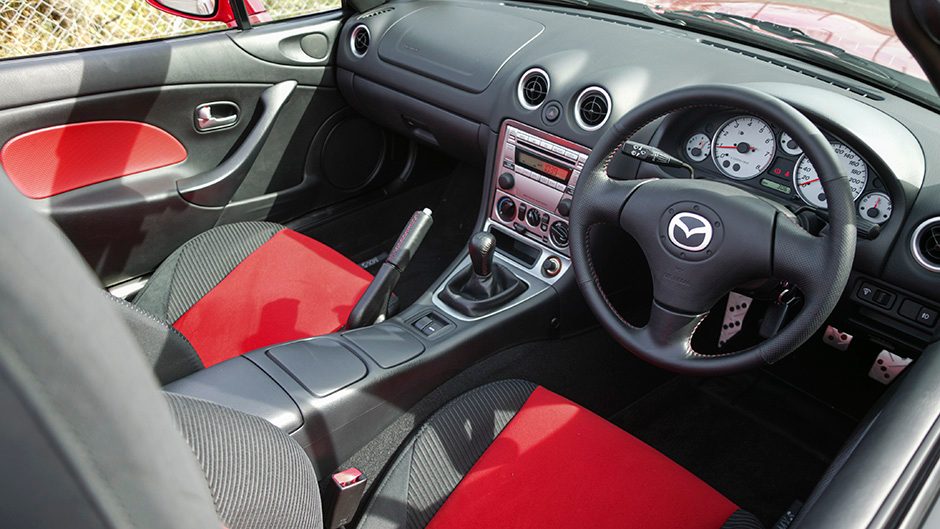
Ride comfort has diminished as a result of the retuned suspension, and the big alloys with their low-profile rubber. Town driving becomes a game of dodging the bumps and manhole covers. While not unbearable, it’s certainly less compliant than the regular MX-5, but not to worry – the fillings in your teeth are safe. The suspension does the business in the twisties and is well versed in defusing New Zealand’s demanding roads, the double wishbones providing good compliance and grip through challenging corners. One grumble is it can leave the car feeling light over bumps and humps. Or maybe it gives another dimension to the driving experience by keeping you on your toes.
The steering wheel still chats away in your hands and treads the tightrope between feedback and kick back like a well-trained circus star. It gently dances to the bumps and curves of the road to let you know what’s up. Turn-in is still razor sharp, and with the extra herbs spinning the diff, the rear has become more animated. Where you needed to provoke the normally aspirated version into sliding, tail-out action, you have to tread carefully with the Turbo, only nailing the throttle once you’ve reached the apex of the corner or the tail can come unstuck when pushing on. Drive sensibly and the Turbo is a delight, with just enough action from the rear to put a smile on your face without the feeling that it will spit you off the road backwards. It retains the MX-5’s wonderfully balanced feeling, but with the extra power, the drive is more involving. Mazda has stayed true to its formula and kept it simple, leaving out traction control and active corner braking to make it a good, fun drive that keeps you honest.
Like the rest of the controls, the brakes are great, with good pedal feel and a consistent performance when you’re demanding the most from them. A quick touch of the middle pedal will have you set up for the next corner while a firmer effort has the Mazda pulling up quickly, yet still maintaining its great body control. We recorded a best emergency stop of 34.98 metres; repeated stops were in the 35m zone.
| Model | 2004 Mazda MX-5 Turbo |
| Price | $43,995 |
| Engine | 1839cc, IL4, T/EFI, 121kW/206Nm |
| Drivetrain | 6-speed manual, rear-wheel drive |
| Fuel Use | 12.0L/100km |
| C02 Output | N.A. g/km |
| 0-100km/h | 7.48sec |
| Weight | 1122kg |


